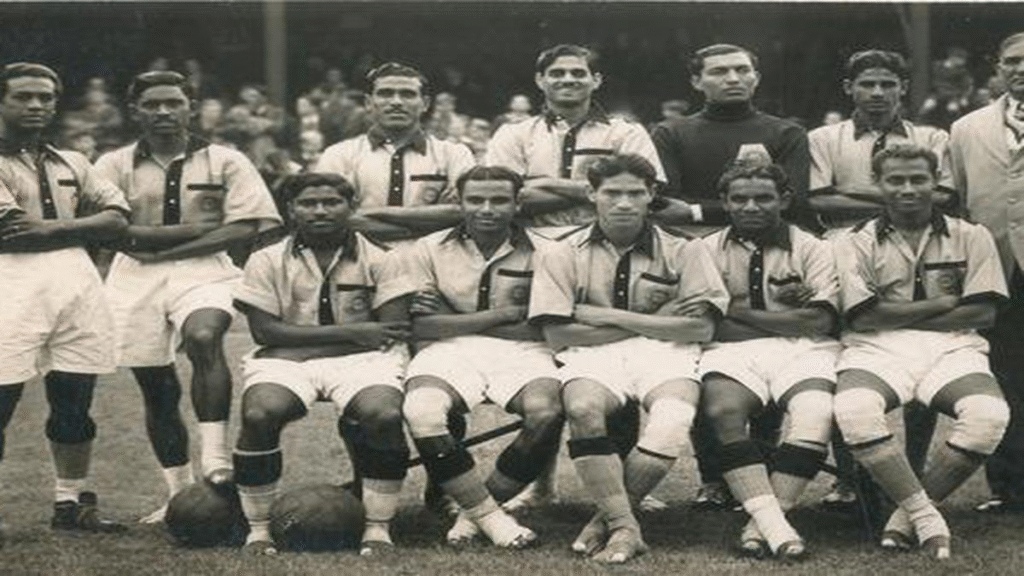
Over the past few weeks, following India’s disappointing loss in the friendly against Thailand and Hongkong in the 3rd round of AFC Asian Cup qualification, the blame game has intensified — targeting the players, the All India Football Federation (AIFF), and even the idea of not fielding Overseas Citizens of India (OCI) footballers. Social media is flooded with comparisons to nations like Hong Kong, Bangladesh, and the UAE, all of whom seemingly “improved” by bringing in players of foreign origin.
But here’s the hard truth: OCI players are not a shortcut to success. The real problem lies much deeper — in a broken structure, a flawed philosophy, and outdated systems that govern Indian football.
The Myth: Indian Players are overpaid and under-motivated
A widely shared narrative claims that Indian footballers lack hunger because of their “₹2-3 crore contracts” in the ISL. This claim is both factually and contextually wrong.
- Only 3–5 top-tier Indian players (e.g., Sunil Chhetri, Lallianzuala Chhangte, Jeakson Singh, Anwar Ali, Gurpreet Singh Sandhu, Sandesh Jhingan) earn around ₹1.5–₹2.5 crore per season — not per month.
- The majority of Indian players earn between ₹20 to ₹50 lakhs annually.
- No professional footballer steps on the pitch intending to lose. To suggest otherwise is an insult to their commitment.
The Real Problem: A Fragile Structure
The Indian Super League (ISL) brought glitz, money, and fan engagement. But beneath that gloss, the ISL has stunted real player development.
📉 League Duration Comparison:
| Country | League | Duration |
|---|---|---|
| India | ISL | 6 months |
| Japan | J-League | 10 months |
| South Korea | K-League | 9 months |
| Bangladesh | BPL | 8 months |
- Shorter seasons = fewer matches = less match fitness and tactical consistency.
- Youth leagues and reserves system are nearly non-functional in India.
- Unlike I-League days, there’s no continuity in coaching or philosophy.
Fact: Over 70% of Indian national team players play <30 club matches a year. In contrast, their Asian counterparts often clock 40–50 matches annually.
🔄 Youth Transition Failure: Lost in the Gap
India’s U-17 and U-20 squads show promise — but very few make it big. Why?

- No seamless transition to senior teams.
- Poor collaboration between AIFF and top academies like Minerva, Classic FA (Manipur), or Sudeva.
- Lack of long-term planning or national footballing philosophy.
“Some seniors and internal politics block strikers who could replace them,” says a former international, requesting anonymity.
The Manipur Model: India’s Football Goldmine
Despite its small size, Manipur accounts for over 50% of Indian national footballers (both men and women). Why?

- Children play football from age 5 in every neighborhood.
- Natural genetic advantages — fast-twitch muscles, high endurance, agility.
- Local tournaments are taken as seriously as national competitions.
- Community pride and passion, not infrastructure, drive excellence.
Example: Renedy Singh, Jeakson Singh, Chinglensana Singh, Tekcham Abhishek, Bala Devi, Panthoi Chanu, etc – all emerged from low-resource setups driven by community love for football.
What Countries Like Qatar & Bangladesh Did Right
Yes, Qatar, Hong Kong, Bangladesh and UAE have benefited from naturalized players — but it’s not the full story.
| Country | Strategy Used |
|---|---|
| Qatar | Aspire Academy + Foreign-born athletes |
| UAE | Foreign coaching + long-term contracts |
| Bangladesh | Continuous league system + OCI players |
| Hong Kong | Club-based training model + diaspora |
They didn’t just import talent — they built ecosystems around them:
- Sports science, injury rehab systems
- Year-round youth and senior leagues
- Investment in coaching badges and AI-supported scouting
💡 Tiki-Taka Over Tackle-Taka: What India Should Aim For?
Indian footballers may lack average height (avg. 5’6″ vs Asian avg. 5’10”) and protein-rich childhood diets. But that doesn’t mean we can’t compete.

- Spain and Japan showed how technical football beats brute force.
- India should pivot to a Tiki-Taka model — prioritizing:
- Ball control
- Short passing
- Positional intelligence
- Decision-making under pressure
Manipur players, with their agility and reflexes, are ideal for full-backs, midfielders, and dynamic forwards — less for aerial duels.
✅ The Roadmap for Indian Football
| Action Area | Recommendation |
|---|---|
| League Structure | Extend ISL to 8–10 months or integrate I-League again AIFF should be the sole owner of all the football leagues in INDIA |
| Coaching | Unified football philosophy across all youth levels |
| Talent Development | Leverage Minerva, Classic FA, SAI centers in Manipur/Kerala/West Bengal/Punjab |
| Recruitment | Focus on football IQ, not just physical build |
| Player Politics | Let seniors mentor, not block, younger stars |
| Diet & Conditioning | Nationwide school programs on sports nutrition |
| Sports friendly Education system | Nationwide education system that supports sports |
🧭 Final Word: No Quick Fix. No Imports Can Save a Broken Machine.
OCI footballers are not the silver bullet. They can enhance, but they can’t solve.

Until India:
- Plays 10-month competitive football
- The Football league is owned and run by AIFF
- Fixes AIFF’s execution gaps
- Empowers grassroots ecosystems
- Implement a nationwide Tiki Taka football phylosophy
- And chooses coaches based on merit, not marketing…
… the dream of a World Cup won’t be realized — no matter who we field.

